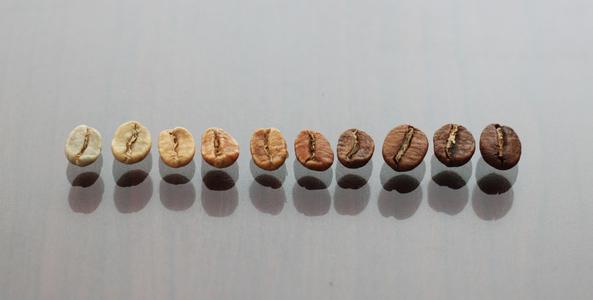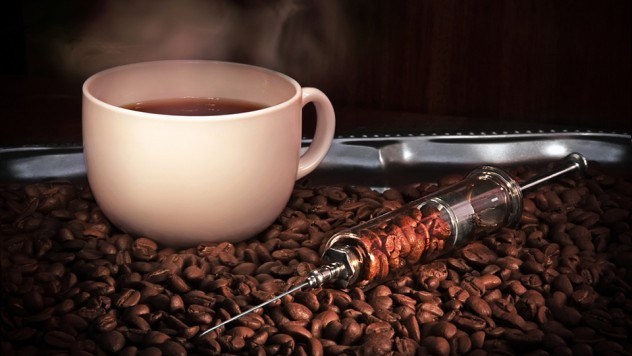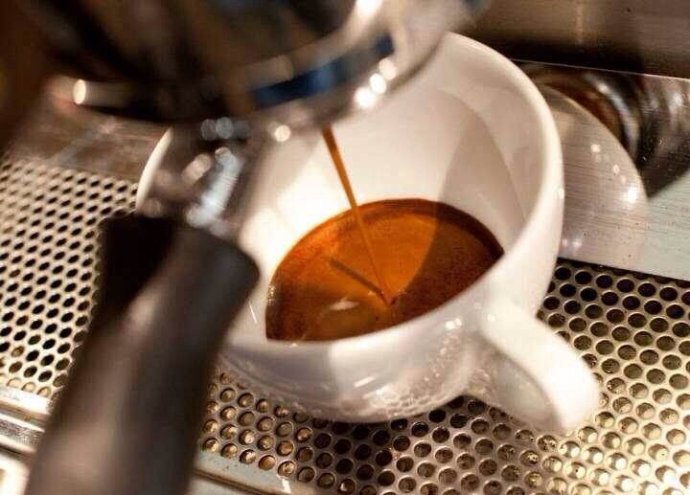Coffee roasting principle the whole process of coffee roasting principle of coffee roaster dehydration the first explosion the second explosion
Have you prepared raw beans and decided to bake coffee beans with exclusive flavor? If not, you might as well use your imagination to follow me on this fragrant baking trip. To put it simply, baking is heating the baking directly. Unlike cooking, you don't need oil, water, salt or sugar to bake. Just put the raw coffee beans in a heat-resistant container, then heat them on the fire, stir the coffee beans constantly while heating, so that each bean is heated evenly, and then stop heating when we reach the desired level. In fact, the whole process is a bit like barbecue, except that the roasted things are coffee beans.
Through the burning of the fire, coffee beans release the aroma of coffee, sprinkling out the personality of each fruit-sour, sweet and bitter. From the insipid raw beans to the endless aftertaste of roasting, it is the most important stop for every coffee bean to outline its character and breed its fragrance during its long journey. Whether in a professional roaster, on your own fire or in an oven, coffee beans have to go through a number of chemical changes, make two popcorn-like sounds and lose 15% of their moisture by 25% by weight during a 16-minute conversation with a temperature as high as 450 degrees Fahrenheit (℃).
dehydration
Coffee beans smell like raw grass before they are roasted, and some dried raw beans even have a bad smell of fermentation! At this time, raw coffee beans generally contain about 10% of the water, which will be the first thing to come out of the coffee beans when roasting begins, so the initial stage is called "dehydration". At the same time, coffee beans begin to "caramelize". In the process of caramelization, carbohydrates, fats, proteins and amino acids in coffee beans begin to interact and combine with each other. the result is from more than 200 substances at the beginning to more than 800 substances in the end, such as the well-known coffee flavor is the melanin-like flavor produced by caramelization.
The first explosion:
As the temperature rises, the gas and water inside the coffee bean will begin to put pressure on the cell wall because it is about to escape. When the pressure accumulates to 20-25 atmospheric pressure, it will break through the cell wall, and then a burst sound will be heard. We call this stage "the first explosion", and the temperature is about 190-200 degrees Celsius. Because each baking is in batches, some beans will burst earlier; others will be relatively late, so it must be a sporadic burst field at first, and then the sound will gradually dense. finally, it gradually thinns and even ends (it is recommended to record the time of start and end). At this time, the color of coffee beans is no longer the khaki at first, but a slightly lighter brown color. Ordinary coffee beans will not start the pot until at least this degree of roasting. We call this baking degree "light roasting".
The second explosion:
The temperature at the end of the first explosion will be about 205 degrees, and then as the heating continues and the temperature continues to rise, the color of the coffee beans will gradually become darker, and the coffee beans will burst again when the temperature reaches 230 degrees Celsius. This is the second explosion. The sound of the second explosion is small and high-frequency, which is different from the first explosion. At the same time, the film on the surface of the coffee bean will fall off, the color of the coffee bean entering the second waterfall will be darker, and the surface will begin to shine.
Deep baking stage:
After the second explosion, it goes to the level of deep roasting, when the coffee beans turn oily black, and there will be a lot of smoke. If the house is equipped with a smoke detector, it is best to turn off the alarm first, so that the whole building will not know that you are making coffee! At this point, the temperature is usually less than 240 degrees Celsius, and if you want to do further deep roasting, you have to raise the temperature above 240 degrees, when the surface of the coffee beans will turn almost black and look very greasy. And this is probably the limit of the baking depth of coffee beans, and then bake to ensure that the coffee beans must burn up and become authentic freshly roasted coffee beans. The process of roasting coffee from raw beans to ripe beans is quite dramatic, the roasting process is as fragrant and joyful as popcorn. From raw beans, light and medium roasting to deep roasting, the water is released again and again, the weight is reduced, but the volume slowly expands, the color of the coffee beans deepens, the fragrant oil is gradually released, and the texture becomes crisp. If it hadn't been roasted, the coffee wouldn't have the aroma we know, and it wouldn't have a complex taste on the taste buds, so it wouldn't be as popular as it is now!

Important Notice :
前街咖啡 FrontStreet Coffee has moved to new addredd:
FrontStreet Coffee Address: 315,Donghua East Road,GuangZhou
Tel:020 38364473
- Prev

What kind of coffee beans does China Coffee recommend? Panama's Castillo de la Castillo
Highland-grown coffee is absolutely high quality, but plantation coffee is not yet available. Panama Coffee is soft, light and balanced in acidity, and its premium coffee beans are pure in flavor and character. The first batch of coffee exported each year leaves in November, and almost all of the premium beans are shipped to France and Finland. Good coffee is grown here.
- Next

What is the golden rule of Espresso? what is the golden rule of Espresso?
Espresso is an extraordinarily accurate coffee, and every step can be quantified. I think such rational coffee is also the reason why it can be quickly promoted and popular-after all, things that can be explained are always easier to learn and easier to use! Espresso's golden rule includes almost every detail of coffee, and I dare not say that I have completely read the golden rule, which is more arrogant.
Related
- Detailed explanation of Jadeite planting Land in Panamanian Jadeite Manor introduction to the grading system of Jadeite competitive bidding, Red bid, Green bid and Rose Summer
- Story of Coffee planting in Brenka region of Costa Rica Stonehenge Manor anaerobic heavy honey treatment of flavor mouth
- What's on the barrel of Blue Mountain Coffee beans?
- Can American coffee also pull flowers? How to use hot American style to pull out a good-looking pattern?
- Can you make a cold extract with coffee beans? What is the right proportion for cold-extracted coffee formula?
- Indonesian PWN Gold Mandrine Coffee Origin Features Flavor How to Chong? Mandolin coffee is American.
- A brief introduction to the flavor characteristics of Brazilian yellow bourbon coffee beans
- What is the effect of different water quality on the flavor of cold-extracted coffee? What kind of water is best for brewing coffee?
- Why do you think of Rose Summer whenever you mention Panamanian coffee?
- Introduction to the characteristics of authentic blue mountain coffee bean producing areas? What is the CIB Coffee Authority in Jamaica?

